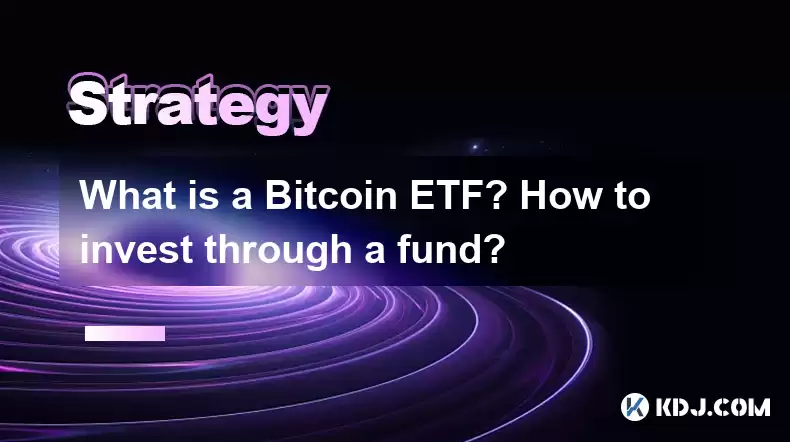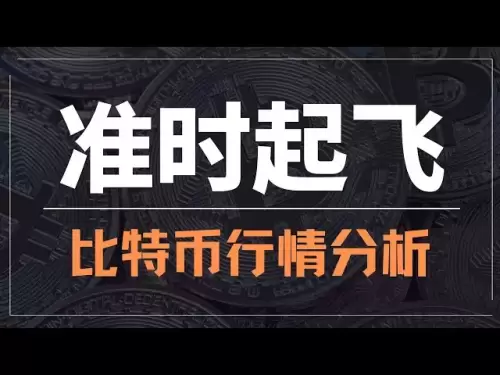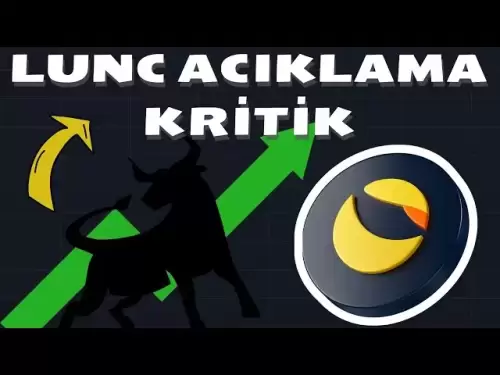-
 Bitcoin
Bitcoin $116400
0.87% -
 Ethereum
Ethereum $3819
3.86% -
 XRP
XRP $3.048
1.62% -
 Tether USDt
Tether USDt $1.000
0.03% -
 BNB
BNB $777.2
0.60% -
 Solana
Solana $169.3
0.46% -
 USDC
USDC $0.0000
0.02% -
 TRON
TRON $0.3414
2.06% -
 Dogecoin
Dogecoin $0.2126
3.33% -
 Cardano
Cardano $0.7527
1.21% -
 Hyperliquid
Hyperliquid $38.86
1.02% -
 Sui
Sui $3.683
5.27% -
 Stellar
Stellar $0.4048
1.45% -
 Chainlink
Chainlink $17.91
6.62% -
 Bitcoin Cash
Bitcoin Cash $576.9
1.29% -
 Hedera
Hedera $0.2487
1.03% -
 Ethena USDe
Ethena USDe $1.001
-0.01% -
 Avalanche
Avalanche $22.46
1.07% -
 Litecoin
Litecoin $120.8
1.69% -
 UNUS SED LEO
UNUS SED LEO $8.963
-0.30% -
 Toncoin
Toncoin $3.301
2.33% -
 Shiba Inu
Shiba Inu $0.00001250
1.13% -
 Uniswap
Uniswap $10.06
3.45% -
 Polkadot
Polkadot $3.731
1.56% -
 Dai
Dai $1.000
0.01% -
 Bitget Token
Bitget Token $4.416
1.58% -
 Cronos
Cronos $0.1482
3.73% -
 Monero
Monero $250.0
-12.34% -
 Pepe
Pepe $0.00001075
2.16% -
 Aave
Aave $274.6
4.17%
What is a Bitcoin ETF? How to invest through a fund?
A Bitcoin ETF allows investors to gain exposure to Bitcoin's price without owning it directly, offering a familiar and regulated investment option on traditional stock exchanges.
Apr 09, 2025 at 05:07 am

A Bitcoin ETF, or Exchange-Traded Fund, is a type of investment vehicle that tracks the price of Bitcoin and allows investors to gain exposure to the cryptocurrency without directly owning it. This financial product is traded on traditional stock exchanges, making it more accessible to investors who are familiar with conventional investment methods but are interested in entering the cryptocurrency market.
Understanding Bitcoin ETFs
A Bitcoin ETF operates similarly to other ETFs, which are funds that hold a basket of assets and are traded on stock exchanges. In the case of a Bitcoin ETF, the fund's value is tied to the price of Bitcoin. This means that as the price of Bitcoin fluctuates, so does the value of the ETF. The primary advantage of investing in a Bitcoin ETF is that it provides a way to invest in Bitcoin without the complexities of managing a cryptocurrency wallet or dealing with cryptocurrency exchanges.
Benefits of Investing in a Bitcoin ETF
Investing in a Bitcoin ETF offers several benefits. Firstly, it provides a regulated and familiar investment vehicle for those who are accustomed to trading stocks and other traditional assets. Secondly, it eliminates the need to manage private keys and secure cryptocurrency wallets, reducing the risk of theft or loss. Thirdly, it allows for easier diversification, as investors can purchase shares in a Bitcoin ETF alongside other investments in their portfolio.
How to Invest in a Bitcoin ETF
Investing in a Bitcoin ETF is similar to investing in any other ETF. Here are the steps to get started:
Choose a Brokerage Account: You will need to open a brokerage account with a firm that offers access to the stock exchange where the Bitcoin ETF is listed. Many popular brokerages, such as Fidelity, Charles Schwab, and Vanguard, offer access to ETFs.
Research Available Bitcoin ETFs: There are several Bitcoin ETFs available, each with its own structure and fees. Some ETFs hold actual Bitcoin, while others use derivatives to track the price. Research the different options to find the one that best suits your investment goals.
Place an Order: Once you have selected a Bitcoin ETF, you can place an order through your brokerage account. You can choose to buy shares at the current market price or set a limit order to buy at a specific price.
Monitor Your Investment: After purchasing shares in a Bitcoin ETF, you can monitor its performance through your brokerage account. You can also set up alerts to notify you of significant price movements.
Risks and Considerations
While Bitcoin ETFs offer a convenient way to invest in Bitcoin, there are also risks to consider. Firstly, the value of a Bitcoin ETF is subject to the same volatility as Bitcoin itself, which can lead to significant price swings. Secondly, there may be fees associated with the ETF, such as management fees and trading costs, which can eat into your returns. Thirdly, regulatory changes could impact the availability and performance of Bitcoin ETFs.
Tax Implications of Bitcoin ETFs
Investing in a Bitcoin ETF can have different tax implications compared to directly owning Bitcoin. In many jurisdictions, gains from selling shares in a Bitcoin ETF are treated as capital gains, similar to other investments. However, the specific tax treatment can vary depending on your location and the structure of the ETF. It is advisable to consult with a tax professional to understand the tax implications of investing in a Bitcoin ETF.
Choosing the Right Bitcoin ETF
When selecting a Bitcoin ETF, there are several factors to consider. Firstly, look at the expense ratio, which is the annual fee charged by the fund. A lower expense ratio can help maximize your returns. Secondly, consider the liquidity of the ETF, as more liquid ETFs tend to have narrower bid-ask spreads, making it easier to buy and sell shares. Thirdly, review the fund's holdings and structure to ensure it aligns with your investment strategy.
Frequently Asked Questions
Q: Can I hold a Bitcoin ETF in a retirement account?
A: Yes, many brokerages allow you to hold ETFs, including Bitcoin ETFs, in retirement accounts such as an IRA or 401(k). However, it is important to check with your brokerage to confirm their specific policies and any potential restrictions.
Q: How does the performance of a Bitcoin ETF compare to holding Bitcoin directly?
A: The performance of a Bitcoin ETF is designed to track the price of Bitcoin, but there may be slight deviations due to fees and other factors. Over time, the performance should be very similar, but holding Bitcoin directly gives you full control over the asset and may be more cost-effective if you manage it well.
Q: Are Bitcoin ETFs available globally?
A: Bitcoin ETFs are available in several countries, but availability can vary. Some countries have approved Bitcoin ETFs for trading on their stock exchanges, while others have not. It is important to check the regulatory environment in your country to determine if Bitcoin ETFs are available.
Q: Can I short a Bitcoin ETF?
A: Yes, many brokerages allow you to short sell shares of a Bitcoin ETF, just as you would with any other ETF. Short selling involves borrowing shares and selling them with the expectation of buying them back at a lower price to return to the lender, profiting from the price difference.
Disclaimer:info@kdj.com
The information provided is not trading advice. kdj.com does not assume any responsibility for any investments made based on the information provided in this article. Cryptocurrencies are highly volatile and it is highly recommended that you invest with caution after thorough research!
If you believe that the content used on this website infringes your copyright, please contact us immediately (info@kdj.com) and we will delete it promptly.
- Pi Coin's dApp and AI Potential: Building a Decentralized Future
- 2025-08-08 02:30:12
- Bitcoin, Greenidge, and Liquidity: Navigating the Crypto Currents in NYC
- 2025-08-08 02:30:12
- Crypto Phishing Alert: $3 Million USDT Loss Highlights DeFi Risks
- 2025-08-08 01:10:12
- Crypto Presale Mania: Is Punisher Coin the High ROI King?
- 2025-08-08 01:10:12
- Online Betting, Platforms & Crypto Access: What's Hot in 2025
- 2025-08-08 00:50:12
- Layer Brett: The Meme Coin Primed for 100x Gains?
- 2025-08-08 01:50:12
Related knowledge

How to avoid common crypto investment mistakes?
Jul 13,2025 at 01:35am
Understanding the Risks of Crypto InvestmentInvesting in cryptocurrency can be highly rewarding, but it also comes with significant risks. One of the ...

What is a long-short crypto strategy?
Jul 15,2025 at 10:56am
Understanding the Basics of a Long-Short Crypto StrategyA long-short crypto strategy is an investment approach where traders simultaneously take long ...

What is a long-short crypto strategy?
Jul 11,2025 at 01:28pm
Understanding the Basics of Long-Short Crypto StrategyA long-short crypto strategy is an investment approach where traders take both long and short po...

How to use the RSI indicator for crypto?
Jul 12,2025 at 03:56pm
Understanding the RSI Indicator in Cryptocurrency TradingThe Relative Strength Index (RSI) is a momentum oscillator used to measure the speed and chan...

Is copy trading a good strategy for crypto beginners?
Jul 12,2025 at 08:28am
Understanding Copy Trading in the Cryptocurrency MarketCopy trading is a strategy where novice traders replicate the trades of experienced investors a...

How to build a crypto portfolio with $1000?
Jul 13,2025 at 08:14pm
Understanding the Basics of Cryptocurrency InvestmentBuilding a crypto portfolio with $1000 starts with understanding the fundamentals of cryptocurren...

How to avoid common crypto investment mistakes?
Jul 13,2025 at 01:35am
Understanding the Risks of Crypto InvestmentInvesting in cryptocurrency can be highly rewarding, but it also comes with significant risks. One of the ...

What is a long-short crypto strategy?
Jul 15,2025 at 10:56am
Understanding the Basics of a Long-Short Crypto StrategyA long-short crypto strategy is an investment approach where traders simultaneously take long ...

What is a long-short crypto strategy?
Jul 11,2025 at 01:28pm
Understanding the Basics of Long-Short Crypto StrategyA long-short crypto strategy is an investment approach where traders take both long and short po...

How to use the RSI indicator for crypto?
Jul 12,2025 at 03:56pm
Understanding the RSI Indicator in Cryptocurrency TradingThe Relative Strength Index (RSI) is a momentum oscillator used to measure the speed and chan...

Is copy trading a good strategy for crypto beginners?
Jul 12,2025 at 08:28am
Understanding Copy Trading in the Cryptocurrency MarketCopy trading is a strategy where novice traders replicate the trades of experienced investors a...

How to build a crypto portfolio with $1000?
Jul 13,2025 at 08:14pm
Understanding the Basics of Cryptocurrency InvestmentBuilding a crypto portfolio with $1000 starts with understanding the fundamentals of cryptocurren...
See all articles

























































































